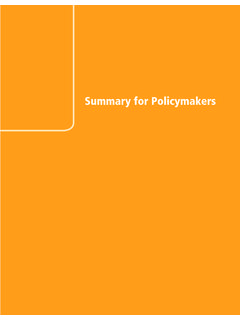Transcription of Notes and Proposed Guidelines on Updated …
1 Page 1 Notes and Proposed Guidelines on Updated Seismic Codes in Ethiopia - Implications for Large-Scale Infrastructures Samuel Kinde Kassegne+,1 (PhD, PE), Samson Engeda++ (SE, PE), Asnake Kebede+++, Eyob Tessema++++ +(Corresponding Author) Associate Professor of Mechanical Engineering, MEMS Research Lab., Mechanical Engineering Department, San Diego State University, San Diego, CA, USA. ++Principal Structural Engineer, SKS Engineering, California, USA +++Senior Transportation Engineer, New York Transit Authority ++++ Senior Transportation Engineer, Meerol Engineering Abstract In light of recent expansion in the planning and construction of major building structures as well as other infrastructures such as railways, mass-housing, dams, bridges, etc, this paper reviews the extent of seismic hazard in Ethiopia and proposes a review and update of the current out-dated and - in most cases - non-conservative seismic code.
2 In specific terms, the last three seismic codes are reviewed and a comprehensive set of discussions on seismic zoning and PGA (peak ground acceleration), special provisions in concrete and steel beams and columns design, and seismic analysis are provided through a comparison with major international building codes. Sets of recommendations in Updated and conservative seismic zoning, need for separate seismic codes for non- building type structures, a choice of 475 years as return-period instead of the current 100 years, and a revisit of the basic seismic design philosophy to focus on performance basis are provided. Key-words seismic design, building code, seismic hazard, earthquake, infrastructure, codes and standards.
3 1 Address correspondence to Samuel Kinde Kassegne Associate Professor of Mechanical Engineering, MEMS Research Lab, Department of Mechanical Engineering, College of Engineering, San Diego State University, 5500 Campanile Drive, CA 92182-1323. E-mail: Tel: (619) 594-1815. Page 2 1. Introduction The current economic expansion in Ethiopia which seems to be driven by a number of enabling factors has had substantial impact in the transportation, energy, and water supply sectors with a growing number of large-scale infrastructure projects such as dams, power-plants, highway roads, water reservoirs, and expansion of railways either coming online or entering construction phase. Furthermore, pressure from other natural developments - the staggering population growth of the country being a primary one - continue to force rapid implementation of large-scale engineering infrastructure works such as mass-housing, water-supply reservoirs, power-plants, dams, new cities, etc.
4 As things stand, the country's population is projected to reach a staggering 120 million by 2025 positioning Ethiopia to be among the top 10-15 populous countries on the planet (see Figure 1) [1,2,3]. In addition to a multitude of other threats that this population growth could bring, the issue of housing these additional 30-40 million Ethiopians in the next few decades will pose a huge risk factor. In a recent paper, it has been argued that 25 new cities with size equivalent to present Dire Dawa are needed or the current 10 cities such as Addis Ababa and Dire Dawa will have to become mega cities of 10 million or more to accommodate this growth [4]. While these projections regarding urbanization may be a little bit on the high-side, there is no denying regarding the need for housing these additional millions of citizens in the next several decades.
5 Interestingly, however, a substantial amount of these large infrastructure works already lie or will be in or in close proximity to the some of the most seismically active regions of the country such as Afar Triangle, the Main Ethiopian Rift (MER), and the Southern Most Rift (SMR) where well-documented damage-causing earthquakes are common. A review of the engineering reports associated with some of the largest and most expensive infrastructure projects in the country suggest that - despite the presence of a substantial amount of published literature on the significant seismicity of the region - the severity of threats posed by seismic hazards on the safety and serviceability of these structures is not well-understood by the main stake-holders such as policy-makers, insurance companies, real-estate developers, capital investors, building design-checkers and, not infrequently, the engineering community itself as well.
6 Against this background, therefore, the need for preparing for this real and substantial threat of seismic hazards in the country is pressing and requires attention at all levels. It is relevant to mention that, in Page 3 this paper, the discussions on seismic hazard pertain to both building -type structures as well as other structures such as railways, bridges, dams, power-plants and the like. However, since the existing seismic code in the country covers only building structures, the discussions here are a bit biased towards buildings. Historically, the country had adopted three revisions of seismic codes (specifically for building structures) since 1978 to address seismic hazards. The enforcement of building code standards to 'determine the minimum national standard for the construction or modification of buildings or alteration of their use in order to ensure public health and safety' was not legislated until 20092 [5].
7 This is certainly an encouraging progress with (a) requirements and mechanisms for building plan/design checks/reviews by building officials outlined (Part Two - Administration), and (b) requirements for ensuring 'safety for people, other construction and properties'' by designing buildings according to 'acceptable building design codes' now legislated (Part Three - Land Use & Designs). However, several fundamental problems still main before rationale seismic design is practiced well in the country. These are: (i) there is growing evidence that the current building codes themselves are inadequate, out-dated, and not stringent enough when compared to the level of seismic risks associated with the country [6], (ii) ambiguities that exist in this first legislation attempt that do not explicitly address the seismicity of the country ( , Part Three-Design, Item 34 that reads "buildings may not exhibit signs of structural failure during their life span under normal loading") may give a ground for stake-holders to ignore seismic effects because 'normal loadings' may arguably not include seismic loads, and (iii)
8 The mechanism for enforcing strict adherence through design checks at the municipality offices (as opposed to external peer-review system) is inadequate because it relies on design-checkers who are neither well-aware of the seismicity of the country nor well-trained in seismic design to start with. Further, the legally mandated requirements and design review process do not apply to public and government large-scale infrastructures (dams, railway structures, electrical transmission structures, etc) which actually are the sources of some of the major concerns. Therefore, ambiguities of the letter of the new building construction law coupled with the lack of awareness and mechanism for truly enforcing code requirements continue to introduce a significant risk of endangering the useful life of these expensive projects as well as human life.
9 2 Ethiopian building Proclamation No. 624/2009. Part 3, of the proclamation further reads "any building or components thereof shall be designed according to acceptable building design codes to ensure safety, conform and unconstrained services". Page 4 In this research report, therefore, the objective is to (i) demonstrate that there is substantial amount of literature on seismicity in Ethiopia that needs to be disseminated to a wider audience, (ii) provide a background and critical review of the last three building codes of the country, (iii) provide a background argument and facts that could serve as starting points for the long-awaited complete review of the current out-dated seismic code, and (iv) propose Guidelines for rationale and conservative seismic design in Ethiopia and surrounding countries for large-scale projects with particular emphasis on dams, highway structures, as well as railways and railway structures.
10 2. Seismic Hazard and its Historical Record in Ethiopia Review of Historical Records of Earthquake It is well established now that, due to its location right on some of the major tectonic plates in the world, , the African and Arabian plates, earthquakes have been a fact of life in Ethiopia for a very long time. The earliest record of such earthquake dates as far back as during the reign of Emperor Zara Yaqob [7]. In the 20th century alone, a study done by Pierre Gouin suggests that as many as 15,000 tremors, strong enough to be felt by humans, had occurred in Ethiopia proper and the Horn of Africa [7]. A similar study by Fekadu Kebede [8] indicated that there were a total of 16 recorded earthquakes of magnitude and higher in some of Ethiopia's seismic active areas in the 20th century alone.




